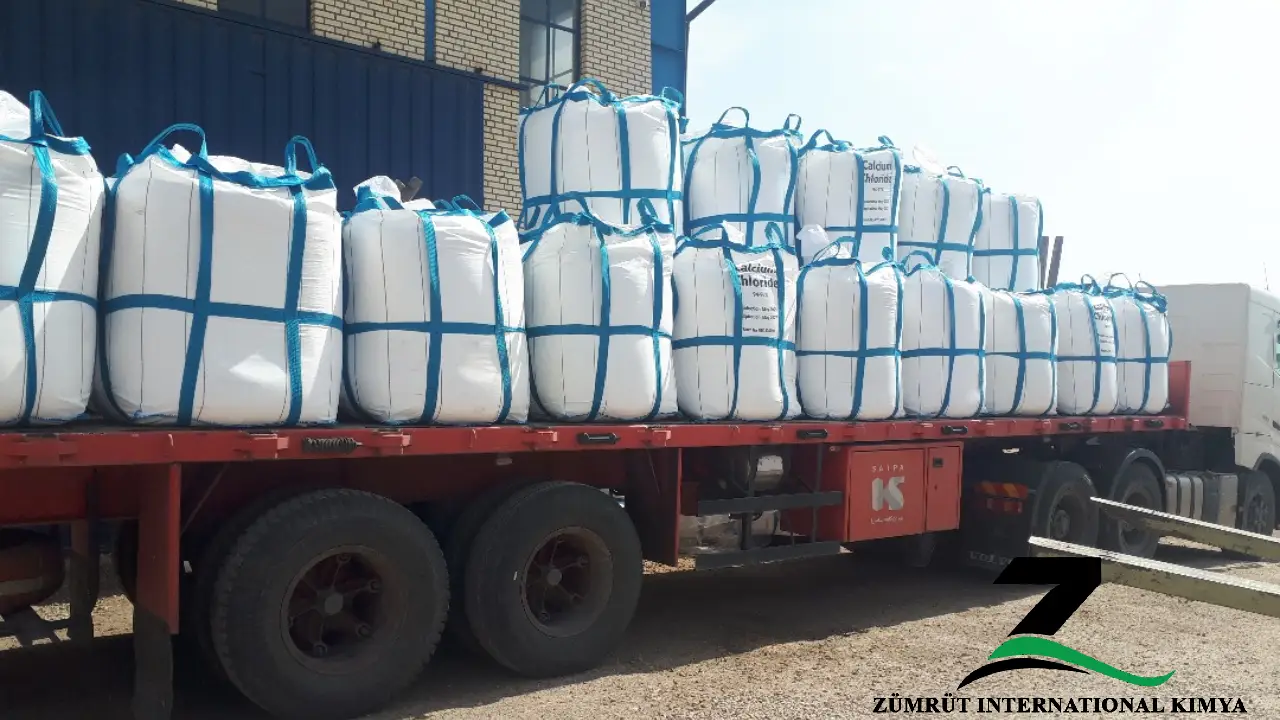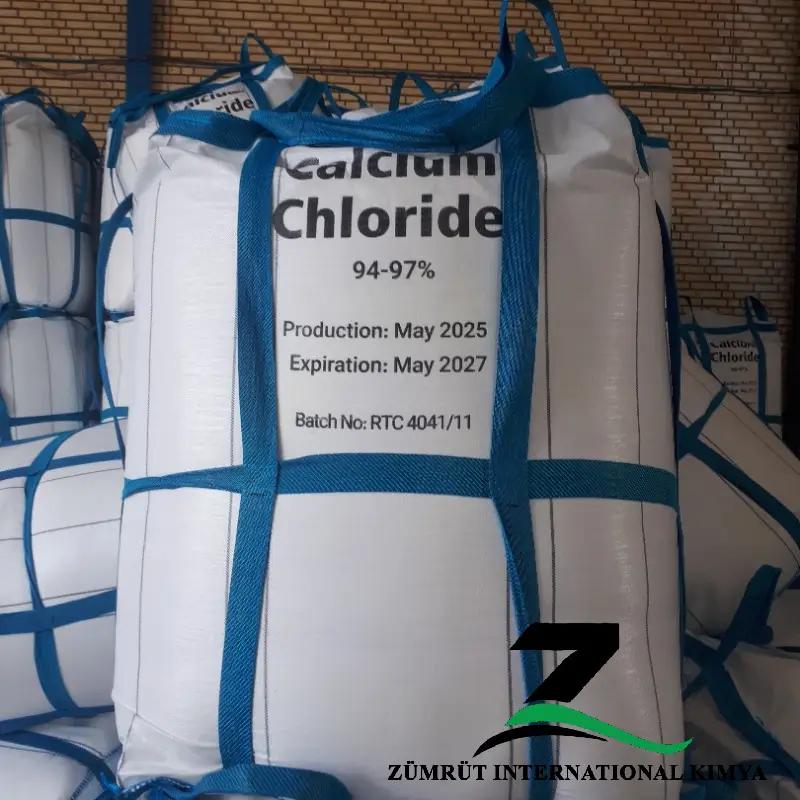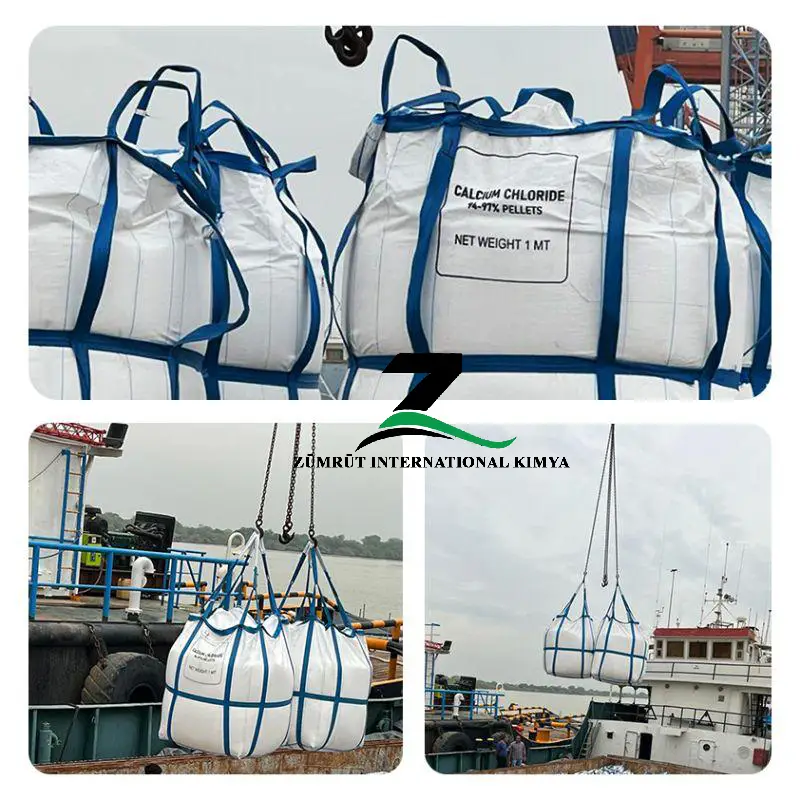
What is Calcium Chloride
Calcium chloride (CaCl₂) is a versatile chemical compound made up of calcium and chlorine. It is highly soluble in water and exhibits hygroscopic properties, meaning it can absorb moisture from the environment. Calcium chloride is available in several forms, including flakes, granules, and solutions.
It is a salt that consists of calcium cations (Ca2+) and chloride anions (Cl−). It is typically obtained as a white crystalline solid at room temperature. Calcium chloride is highly soluble in water and has a variety of applications across different industries. Calcium chloride, chemically represented as CaCl2, is an inorganic compound recognized as calcium chlorine. Composed of calcium and chloride, it often contains two water molecules. Known for its moisture-absorbing properties, it is categorized as a desalting substance. To maintain its efficacy, calcium chloride must be stored in air and moisture-proof packaging. At room temperature, it appears as white flakes or pellets and exhibits high solubility in water. It functions effectively as a desiccant in a temperature range from freezing point up to 80 °C or more and serves as the active compound in various Arbortech products. In its anhydrous form, calcium chloride has a molecular mass of 110.98 g/mol. With notable characteristics, such as heat release upon dissolving in water due to high enthalpy, it finds applications in de-icing, dust control on gravel roads, and as an absorbing agent in desiccants. Derived from limestone or brine purification through the Solvay process, calcium chloride is not considered hazardous to the environment, though it is classified as H319 under GHS, indicating its potential to cause serious eye irritation. Calcium chloride is utilized in both food and industrial grades, with a concentration of 95%
Characteristics of CaCl2 :
- Chemical Formula : CaCl₂
- Hygroscopic : Absorbs moisture from the air, making it useful as a desiccant.
- Solubility : Highly soluble in water, releasing heat in the process (exothermic reaction).
- Physical Forms : Available as flakes, granules, pellets, and liquid solutions.
- Non-toxic : Generally considered safe for various applications, though it should be handled with care to avoid skin and eye irritation.
Uses of Calcium Chloride
- De-icing and Anti-icing : Used to melt ice and snow on roads, sidewalks, and driveways. It works effectively at lower temperatures compared to sodium chloride (table salt).
- Dust Control : Applied on unpaved roads and construction sites to suppress dust by absorbing moisture from the air and binding particles together.
- Concrete Accelerator : Added to concrete mixes to speed up the setting time, especially in cold weather.
- Desiccant : Used in moisture-absorbing products like dehumidifiers and packaging to keep items dry.
- Food Industry : Acts as a firming agent in canned vegetables, a stabilizer in ice cream, and an electrolyte in sports drinks.
- Agriculture : Provides a source of calcium for plants and helps with soil stabilization.
- Aquarium Maintenance : Used to increase the calcium concentration in reef aquariums, supporting the growth of corals and other marine organisms.
- Medical Applications : Employed in medical treatments to correct calcium deficiencies and as an ingredient in some medications.

Calcium Chloride Finds Versatile Application Across Various Industries
Calcium chloride (CaCl₂) is a highly versatile compound utilized in multiple industries due to its hygroscopic nature, solubility in water, and exothermic dissolution properties. Here’s a closer look at its diverse applications:
- De-icing and Anti-icing
– Roads and Walkways : Calcium chloride is a highly effective de-icer, working at lower temperatures than sodium chloride. It melts ice and snow on roads, sidewalks, and driveways, enhancing safety during winter.
– Anti-icing : Applied before a snowstorm to prevent ice from forming and sticking to surfaces. - Dust Control
– Unpaved Roads : It is used to control dust on unpaved roads, construction sites, and mining operations by absorbing moisture from the air and binding dust particles.
– Industrial Sites : Helps maintain air quality and visibility by suppressing dust. - Concrete Acceleration
– Construction : Added to concrete mixtures to speed up the setting and curing process, especially beneficial in cold weather conditions where concrete naturally sets more slowly. - Desiccant
– Moisture Absorption : Used in desiccants for packaging, shipping, and storage to keep products dry. It’s also used in dehumidifiers to reduce humidity levels in buildings.
– Desiccant Bags : Common in packaging for electronics, pharmaceuticals, and other moisture-sensitive products. - Food Industry
– Firming Agent : Helps maintain firmness and texture in canned vegetables and fruits.
– Electrolyte : Added to sports drinks and other beverages to replenish electrolytes.
– Cheese Making : Used to adjust the calcium content in milk during cheese production. - Agriculture
– Soil Amendment : Improves soil quality and structure, aiding in water retention and nutrient absorption.
– Plant Nutrition : Provides a source of calcium for crops, essential for healthy plant growth and development. - Aquarium Maintenance
– Reef Aquariums : Increases calcium concentration in marine aquariums, supporting the growth of corals and other marine organisms.
– Water Treatment : Used to balance mineral content in water, promoting a healthy aquatic environment. - Medical and Pharmaceutical
– Calcium Supplement : Used to treat calcium deficiencies in people and animals.
– Pharmaceuticals : Included in some medications and intravenous fluids to maintain calcium levels in patients. - Industrial Applications
– Oil and Gas : Used in drilling fluids to maintain pressure and stabilize the wellbore.
– Cooling Systems : Serves as a refrigerant in industrial cooling systems and brine solutions.
Packing of Calcium Chloride
It is packing in 25 PP bags for preventing to absorb moisture.
Also, for more protection 50 PP bags of put in Jumbo bag.
According to our customer inquiry, Calcium Chloride offered in only Jumbo bag or putting PP bags on a pallet and shrinking.

Technical Data Sheet Calcium Chloride
| Production unit name : Chloran Chemical Production Company | Sample name: Calcium Chloride | Sampling date: 2024/10/10 | |||||||
| Place of sampling : HP 1107 B | Sample condition : White Granulated, Particle size : 1-4 mm | Test date: 2024/10/10 | |||||||
| HS code:282720 | Test resource: ISIRI13571,INSO 18193 & 18195 | Type of standard : National | |||||||
| ITEM | TEST Name | UNIT | IMPOETANCE DEGREE | ACCEPTING LIMIT | TEST RESULT | TEST METHOD | |||
| 1 | Purity of calcium chloride(CaCl2) | %W/W | – | MIN 94 | 95.92 | INSO 18195 Clause 4-1 | |||
| 2 | Ca(OH)2 Relative to active substance CaCl2 | %W/W | – | MAX 0.2 | 0.03 | INSO 18195 Clause 4-3 | |||
| 3 | Fluoride | %W/W | – | MAX 0.004 | 0.0022 | ISIRI 13571 Clause 6-5 | |||
| 4 | Total Alkaline as NaCl Relative to active substance CaCl2 | %W/W | – | MAX 6 | 2.39 | INSO 18195 Clause 4-2-7 | |||
| 5 | Total Manesium as MgCl2 Relative to active substance CaCl2 | %W/W | – | MAX 0.5 | 0.04 | INSO 18195 Clause 4-2-4 | |||
| 6 | pH | – | 4.5-9.5 | 9.1 | ISIRI 13571 Clause 3-4 | ||||
Technical Data Sheet Calcium Chloride 94-97%



